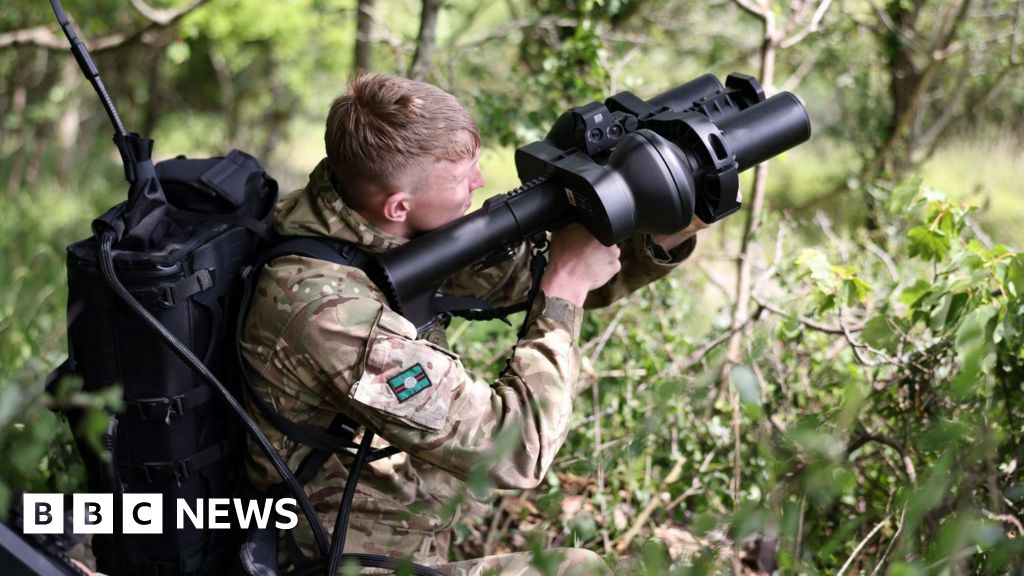The government will invest billions of pounds to move the UK to “war-fighting readiness” in the face of a new era of threats from nuclear powers like Russia and China, the defence secretary has said.
The government has accepted all 62 recommendations set out in a long-awaited Strategic Defence Review (SDR), including building 12 new nuclear-powered submarines, six new munitions factories and embracing technologies like artificial intelligence.
Britain’s army needs to become “10 times more lethal” to face a “new era of threats”, John Healey told MPs on Monday.
Conservative shadow defence secretary James Cartlidge called the plans a “damp squib”, which was “underfunded and totally underwhelming”.
The SDR, carried out by former Labour Defence Sectary Lord Robertson, found the UK’s armed forces are “not currently equipped” to fight opponents like Russia or China, with inadequate stockpiles of weapons, poor recruitment and crumbling morale.
The report warned the UK is already experiencing daily attacks on its critical national infrastructure, testing the economy’s vulnerabilities and “and challenging its social cohesion”.
Russia is “an immediate and pressing threat”, as the invasion of Ukraine “makes unequivocally clear its willingness to use force to achieve its goals”, the report finds.
Iran and North Korea are also highlighted and described as regional disruptors.
In a Commons statement, Healey said: “The threats we face are now more serious and less predictable than at any time since the end of the Cold War.
“We face war in Europe, growing Russian aggression, new nuclear risks, and daily cyber-attacks at home.
Other announcements in the review include:
Healey said the changes would help “create a British Army which is 10 times more lethal”.
He also signalled the government planned to increase the size of the Army from 74,400 to at least 76,000 full-time soldiers after the next election.
The UK’s Cadet Forces – voluntary youth organisations – will expand by 30% by 2030, with a “gap year” offered to people interested in sampling military life.
Some 30,000 highly-skilled jobs would also be created through increased investment in research and weapons manufacturing, Healey said.
The review was drawn up with the expectation that defence spending would rise to 2.5% of national income or GDP by 2027 – up from around 2.3% now.
But what the review describes as a “small uplift” in the Army has not yet been funded.
A defence source also told the BBC the commitment to build up to 12 new attack submarines would require an increase in defence spending to at least 3% of GDP.
Ministers say they expect to spend 3% of GDP on defence by 2034 at the latest but have given no guarantees – and the run-up to the review’s release has been dominated by a political row over when government will hit the milestone.
The Conservatives say the move – which would hike spending by around £20bn a year – should be met by the end of the decade.
Cartlidge said that “without the funding, [the review] is an empty wish list” and the “ships and submarines it talks of are a fantasy fleet”.
The government “wants to send a strong message to Moscow, but the messages he’s sending are profoundly weak”, Cartlidge added.
“After so much hype, the SDR is a damp squib,” he said.
“It’s overdue, underfunded and totally underwhelming. Our armed forces deserve better than this.”
But Sir Keir Starmer argued the review would help create a “battle-ready, armour clad” nation.
Launching the review in Glasgow earlier, the prime minister said: “When we are being directly threatened by states with advanced military forces, the most effective way to deter them is to be ready, and frankly show them that we’re ready to deliver peace through strength.”
Lib Dem defence spokeswoman Helen Maguire said her party welcomed the government’s plan, but warned “meeting generational risks will require generational commitments”.
“It is frankly staggering that we still do not have a clear answer to the vital question where is the money coming from to fund these ambitions,” she added.
to keep up with the inner workings of Westminster and beyond.
Source: www.bbc.com
